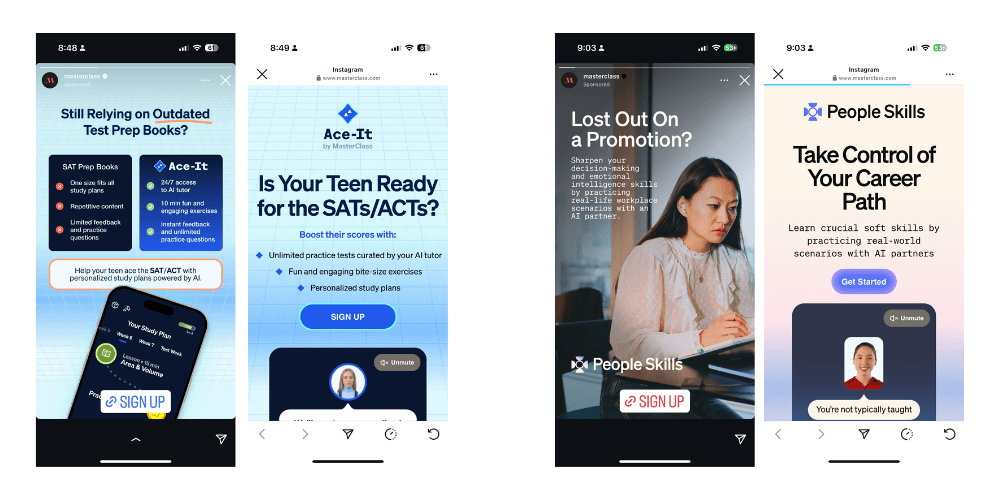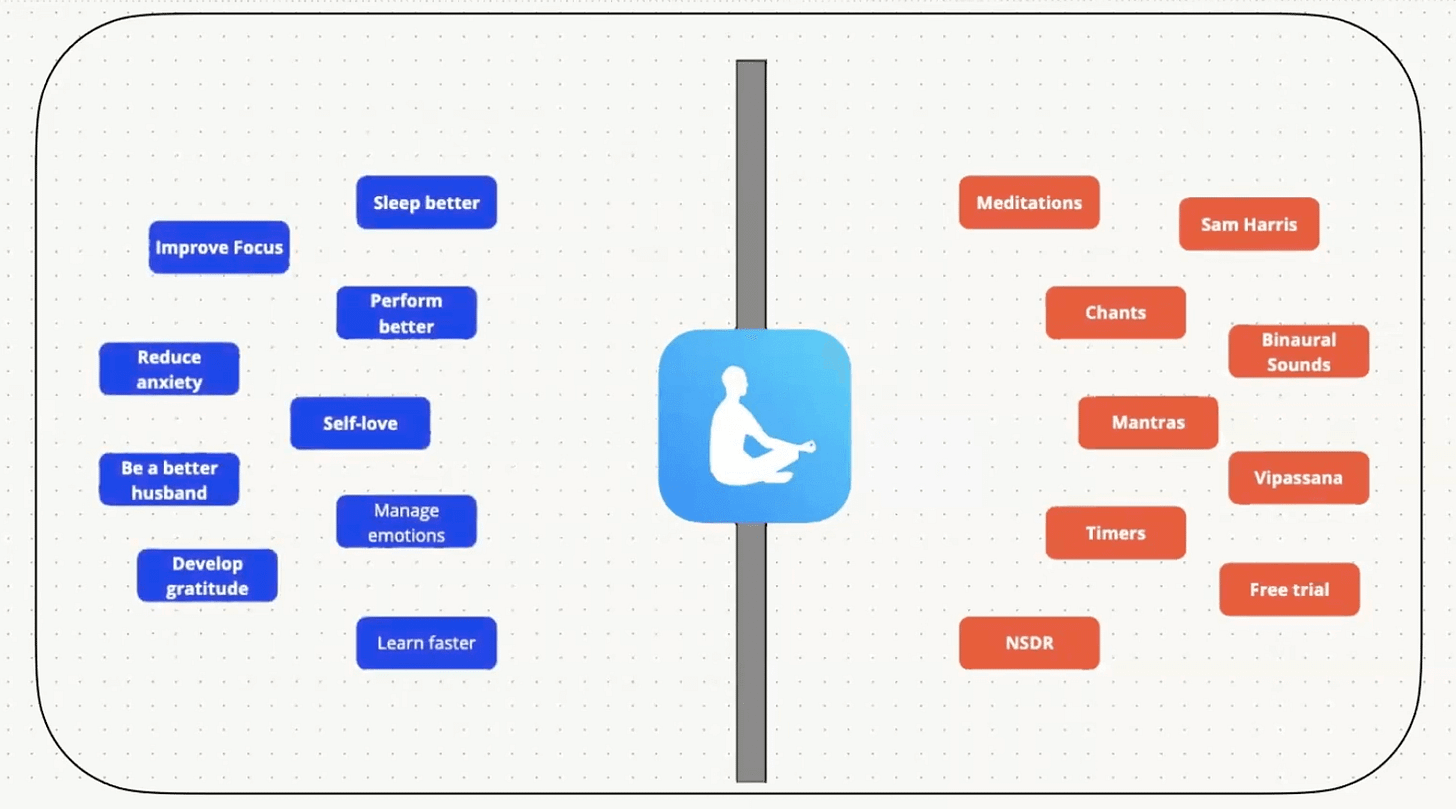💎 Growth Gems #118 - Strategy, Paid & Organic Acquisition
Fellow growth practitioner!
I’ve dug up more gems 💎 during my last shift in the growth mine. This week, I’m bringing you back insights on:
Mined from the depths, I hope these hard-dug insights from Offer Yehudai, Eric Seufert, Matt Lerner, and Nopadon Wongpakdee are helpful.
🥇 TOP GEM OF THE WEEK
SPONSORED INSIGHT & RESOURCE
I’ve never seen so many mentions of web2app and web funnels on LinkedIn and in blog articles!
BUT, instead of rushing to hire a web developer and dedicate resources, wouldn’t it be wise to assess the growth potential?
All without code (or Jira ticket): you or a growth person on your team can build it.
I got you an exclusive free trial offer from FunnelFox (mention Growth Gems during the demo), so don’t miss out!
Strategy
Gems from Offer Yehudai (CEO of Arya) and Eric Seufert (Independent analyst & investor) in How to launch an app on the Mobile Dev Memo Podcast
What happens when two industry “veterans” discuss “how to launch an app”?
There are many gems, some confirmations, dots connected, and a couple of new perspectives.
Viral launch vs. controlled launch
💎 Virality alone does not indicate that a product has achieved product-market fit, that customers are willing to pay for it, or that it has good retention. It’s more of a vanity KPI. It means nothing unless you prove that virality translates into retention and paid retention.
(11:14) by Offer
💎 It’s a flawed launch strategy to allow products to rapidly gain attention before they are ready. It is crucial to gradually introduce a product to the market to test and refine it, ensuring it meets quality standards and generates positive unit economics in user acquisition.
(13:37) by Eric
There are many examples of products that went viral but only saw spikes. Examples: Airchat, Clubhouse, Yo!
💎 The first impression you make might be the last one. If you get too much exposure, too fast, and your app is a gimmick, then it probably doesn’t matter how much you improve your product later on: people will not return.
(14:20) by Eric
💎 If you build your strategy on viral hooks (e.g., access to contact book, algorithm hack) that can be blocked in a day by a platform, it’s a huge risk. Not only do you not really learn anything, you’re also building your strategy on a hack.
(36:15) by Offer
The platform driving discovery can always find a way to stop growth. Some examples:
Zynga and Snap when Snap introduced a second step to sharing
Substack and Twitter
iPhone and access to Contacts
Early monetization & UA
💎 Implementing monetization early is crucial. Take bold steps and establish pricing that may feel uncomfortable for both you and your users. Avoid over-justifying your pricing strategy; instead, focus on launching it and adjust from there. This is how you will learn the most.
(44:51) by Offer
Eric mentioned doing this with a waitlist form or having some sort of MVP.
A great in-between is to have an ad + landing page + onboarding funnel. Want a low-effort and flexible way to create that onboarding funnel on the web? Check out today’s sponsor, FunnelFox.
It’s not just for early-stage companies either: an example of a company that leaned into this recently is Masterclass 👇
They didn’t stop at the ad and landing page: there was a signup flow, and they were going all the way to asking for payment details (before a “product not available” message).
💎 Try starting with a very high price to see if you get anybody to initially convert. It’s ok if this early test leads to people churning because of price: you will identify people with the most willingness to pay to solve their problem. Example: Arya was initially priced at $90/month with almost nothing in the product, and they got conversions but churned after a few weeks. They learned from users’ expectations and later decreased the price.
(16:25) by Offer
💎 Offering a free trial might lead you to optimize for the wrong KPI and audience: you’re trying to convince people who did not convert to convert. Instead, double down on the users that are willing to pay.
(17:28) by Offer
You’re trying to optimize for revenue and profit, not just decrease the acquisition cost...
💎 In the early days, you don’t know your LTV, so you focus on your CAC payback. For example, you can start by limiting your monthly UA budget to 3 months of CAC payback and grow/spend as long as that’s the case.
(22:50) by Offer
They mentioned this is more trustworthy than trying to project LTV with very little data.
Why start with a web app
💎 You need to understand precisely who you’re “buying”, down to the creative level. This is hard post-ATT, which makes the mobile web a great platform vs. mobile app. Example: for Arya, a creative did amazing for acquisition but led to a high churn rate.
(24:10) by Offer
💎 First launching on the web makes a lot of sense now, even if ultimately the goal is to be an app:
Ease of attribution, including for creatives
Flexibility to make changes quickly
(25:10) by Eric
When considering why you’d launch on the web first, there’s a lot of overlap with the pros and cons of web2app and web-based funnels.
That said, below is a list of benefits/challenges that are particularly relevant in the context of a launch (vs. a platform expansion). Let’s see what people on LinkedIn think, I’m sure we can refine this!
Messaging tests
💎 A controlled paid UA launch lets you see how different messaging attracts different audiences and leads to different CAC paybacks. Some people are willing to spend more (e.g., go for yearly or monthly), and you can focus there.
(27:16) by Offer
💎 To find who you should reach, start with an assumption based on user interviews. Then, create ads with different messaging and emotional hooks: $100/week will let you know if your messaging lands. Example: Arya didn’t know that 80% would be millennial moms (30-45-year-old women) and found that audience and the corresponding messaging through paid UA.
(38:10) by Offer
Below are some examples of hooks Arya tested on paid UA.
Improving your product
💎 Finding out what messaging works can be used as an input to product development. You can put whatever you want in an ad, and if you see people are receptive to that, you can consider building accordingly.
(28:30) by Eric
💎 To optimize products effectively during the early stages when you have limited data and users, you must implement dynamic feedback mechanisms. One effective strategy is creating a responsive cancellation flow in the application to gather insights directly from users who express a desire to cancel and leverage their answers to improve the product.
(46:35) by Offer
Offer shared with me a few examples of insights, uncovered this way, that they took action on:
User research and Creatives
Gems from Matt Lerner (Founder & CEO at SYSTM) and Nopadon Wongpakdee (Co-founder at SYSTM) in Discover your high-converting headline in a Maven Lightning Lesson
I’ve discovered Matt’s content and book through some other experts and really liked it.
In this lesson, he shares some insights on how to find the best headline through user research.
💎 Use the “Now you can” framework to craft better headlines: When you put “Now you can” in front of your headline, it needs to make sense and be about the outcome.
(09:45) by Matt
Example below for a meditation app:
💎 Ask these four magic questions to find your “Now you can”:
In your own words, what did you buy?
What would that enable you to do?
Why was X important to you?
Who else cared about you being able to X?
Record what customers say, record what they say, transcribe it, and start to look for patterns.
(14:40) by Matt
💎 As you go through customer interviews, dive deeper if features are being mentioned. When it happens (e.g., someone saying, “I like your dashboard”), ask, “Why is that so important to you?”.
(15:20) by Nopadon
💎 Use the 5-second test to validate the “Now you can” headlines you’re crafting. Show the landing page for 5 seconds to potential customers and then ask:
What did that say?
What do you think that means?
What questions do you have?
You only care about comprehension. Iterate on the headline until about 70% of people get it.
(20:30) by Matt
Before I leave, here is a quote from Matt Lerner in the video above:
“90% of your growth will come from 10% of your ideas. Progress is deciding what not to do.” - Matt Lerner (Founder & CEO at SYSTM)
See you next time.
Stay curious!
⛏️ Sylvain
🔗 Sources:















